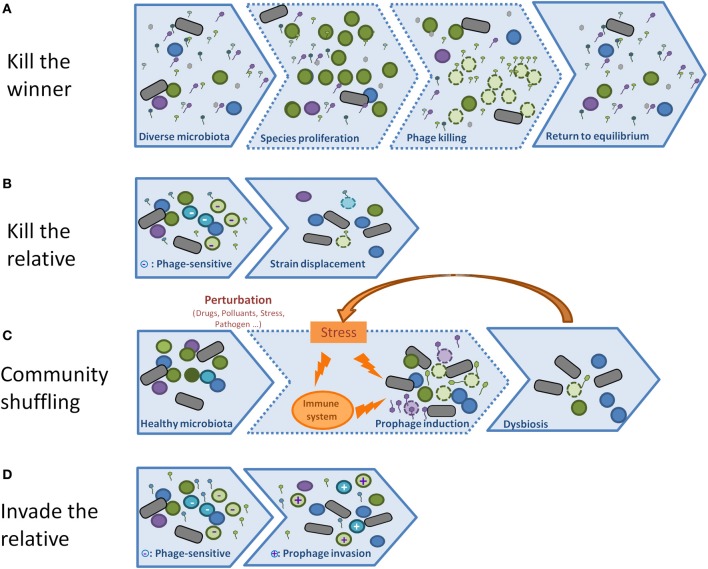Figure 3.
(A) In the Kill the winner scheme, viruses are more abundant than bacteria, but do not infect them because of their low concentration (step 1). However, if some bacteria overgrow (step 2), and reach the threshold above which phages can absorb and predate them, they will lyse, and the system will shift back to its initial state (3). (B) In the Kill the relative scheme, phages do not need to be abundant, they are produced by lysogen strains (step 1) and kill their relatives that are not resistant to the phage (bacteria of the same color, but lighter, with a “-”label). The net result is an advantage of lysogenic populations relative to non-lysogens (step 2). (C) In the Community shuffling scenario, temperate phages act negatively on their host by killing them upon sensing a mild stress that would not have killed a non-lysogen (step 2). A positive feed-back loop may even take place if the massive lysis leads to an host reaction, such as inflammation (orange arrow). The net result is a global displacement of population, and possibly dysbiosis. (D) Temperate phages can act profoundly on bacterial population without lysing them: in the Invade the relative scheme, the prophage propagates itself by infecting new hosts without lysing them, but by establishing lysogeny (step 2, the + sign indicates new lysogens).

